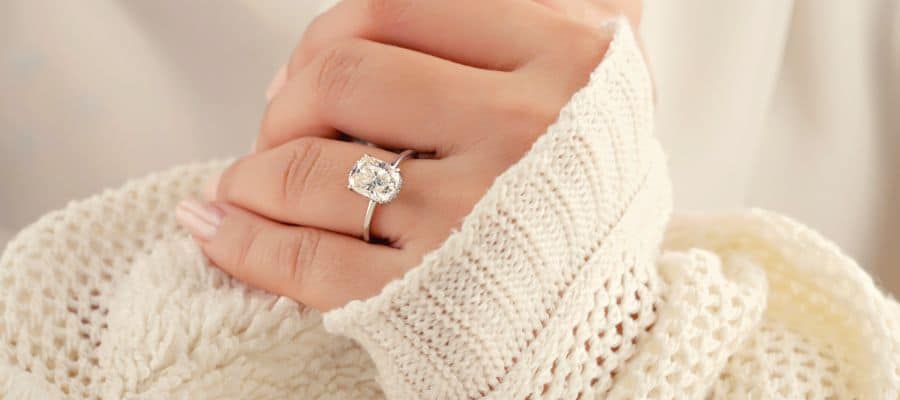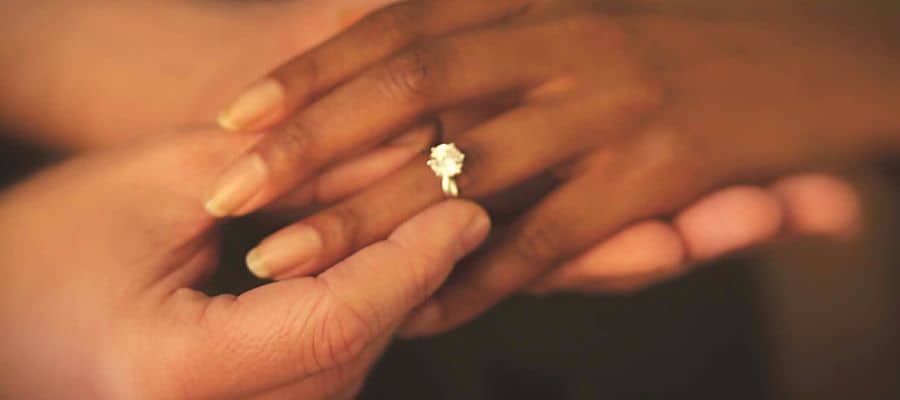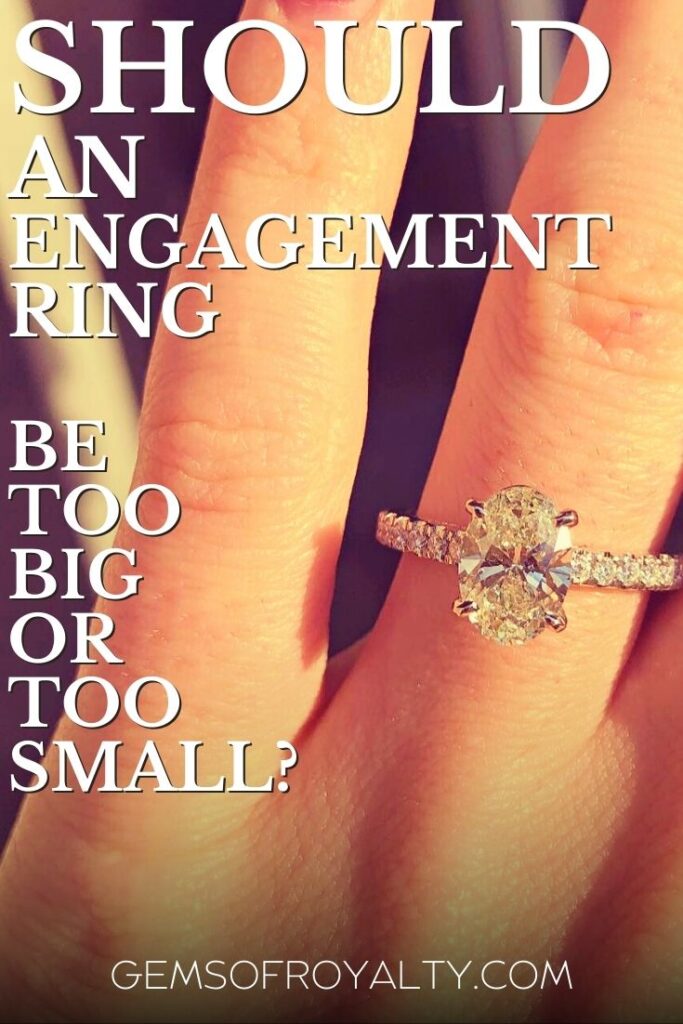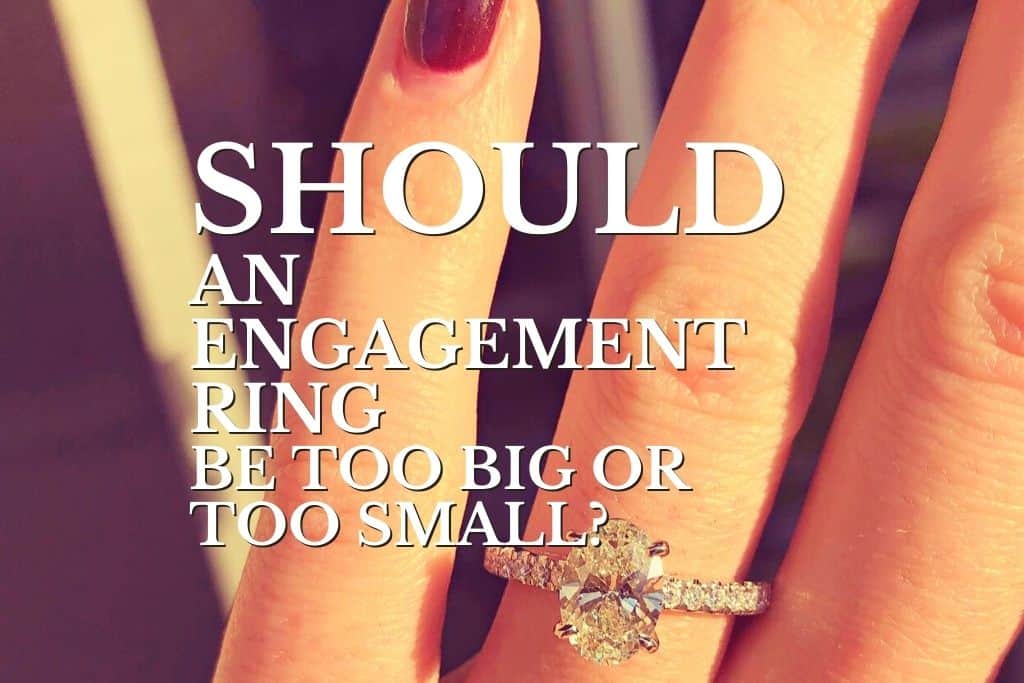One of the most stressful parts of picking out an engagement ring is ensuring the size is accurate, especially if the person is between sizes. Luckily, you can determine the proper ring size in your own home.
An engagement ring should be too big rather than too small. It is easier to take the metal out of a ring to make it smaller rather than to stretch it to make it bigger. Choosing a larger ring can also account for the size of a finger changing based on the weather.
This article will teach you how to size an engagement ring and the different factors that affect the size. I will also explore the average ring size for women in the United States and how to resize a ring.
How To Properly Size an Engagement Ring

You can size an engagement ring at home by printing a size guide from a ring retailer or using string/paper and a ruler to measure the finger. These tools can measure a ring you own or your finger for accurate results.
Sizing a Ring With Printable Tools
Retailers like Blue Nile, Brilliant Earth, and Zales have free printable tools on their websites to help perfectly size your engagement ring before purchasing. One of the tools is a ring chart with circles containing various ring sizes. With this chart, you can take a ring you already own and place it over the circles until it lines up with one.
Be sure to check how the ring fits on your left ring finger first. All fingers can vary in size just slightly, so it is vital to ensure the ring you are using fits on your left ring finger. If the ring is between sizes, choose the larger size. Fingers can swell in warmer weather, and you can size the ring down if needed.
A printable chart is an excellent tool if you are trying to figure out someone’s ring size without them knowing. Simply print out the chart, find a ring they wear, and size it against the chart.
Sizing a Ring With String or Paper
You can still resize your ring at home if you don’t have a printer. Find a piece of string or ribbon around your house and ask someone to help for the best results.
- Encircle your ring finger with the string. At the point where it starts to overlap, add a mark with a pen or marker.
- Measure the string against a ruler for size.
- Divide the measurement by pi (3.14) to get the diameter of the ring, or measure the string against the printed sizing chart.
You can do the same thing with a strip of paper. Zales and The Knot have a printable strip to make this easier. Remember that the ring should fit comfortably on your finger and easily slide on and off. You don’t want it to fall off your finger, but you also don’t want it so tight that it’s nearly impossible to get off. Remember that you may have a slightly larger ring size when your hands are warm than when they are cold.
Once you have the paper or string measured, you can tape it together and practice sliding it on and off to ensure it fits well. It is also best to measure the finger multiple times to ensure accuracy.
Resizing Your Ring
Wherever you choose to get your ring from will have information about resizing, but the general rule of thumb is that it is easier to make it smaller rather than bigger. This is because of how the metals stretch and pull during resizing.
When you downsize a ring, you do so by removing part of the ring’s metal. You stretch the metal already there to make the jewelry bigger. You cannot add more metal to the ring. The band becomes a lot thinner when you have to make it bigger. This is why it is imperative to measure.
Having a ring slightly too big or too small is okay, but you don’t want to get one more than a size and a half too small for the person. It won’t be able to be resized appropriately.
That said, you cannot resize some rings at all. You can’t resize rings with jewels around the band because the stretched metal cannot hold the gems in place. The same goes for twisted bands. Some intricate ring designs may not allow for resizing.
It is important to double-check if you can resize a ring before purchasing. You can check the online retailer or contact the store to find this information.
Other Factors That Affect Ring Size
It is normal and natural for your fingers to change size slightly over the day or year. These are some other factors that can affect the size of a ring.
- Band width. Wider bands tend to fit tighter than thinner ones.
- Finger shape. All fingers are shaped differently, and you should consider your shape when sizing your ring finger.
- Physical activity. High levels of physical activity can cause sweating and swelling in your fingers, affecting how your ring fits.
- Food. Saltier foods cause your fingers to swell slightly.
How Ring Size Is Determined

Ring size is determined by measuring the diameter of the ring in millimeters and is assigned a number accordingly. The chart below shows some of the average ring sizes for women in the United States.
| Size | Diameter (mm) |
| 4 | 14.8 mm (0.58 in) |
| 5 | 15.6 mm (0.61 in) |
| 6 | 16.45 mm (0.65 in) |
| 7 | 17.3 mm (0.68 in) |
You can use the diameter measurements to help size your ring finger at home. These are only the average sizes of rings, and you can find more on this printable sizing chart.
Conclusion
Engagement rings should be too big rather than too small. Weather, finger shape, and the width of the ring’s band can alter your finger size. If you get a ring that is slightly too big, it will account for these factors, or it can be sized down. Many retailers offer one free resizing as long as the ring can be resized. You can check with the retailer to see which rings come with this benefit.
If you found this article useful, make sure you save this pin below to your Wedding/Engagement board.


